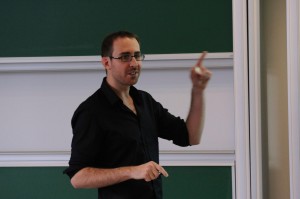Influence of the dissipation mechanism on collisionless magnetic reconnection in symmetric and asymmetric current layers
Published in Physics of Plasmas
Nicolas Aunai, Michael Hesse, Carrie Black, Rebekah Evans, Maria Kuznetsova
Numerical studies implementing different versions of the collisionless Ohm’s law have shown a reconnection rate insensitive to the nature of the non-ideal mechanism occurring at the X line, as soon as the Hall effect is operating. Consequently, the dissipation mechanism occurring in the vicinity of the reconnection site in collisionless systems is usually thought not to have a dynamical role beyond the violation of the frozen-in condition. The interpretation of recent studies has, however, led to the opposite conclusion that the electron scale dissipative processes play an important dynamical role in preventing an elongation of the electron layer from throttling the reconnection rate. This work re-visits this topic with a new approach. Instead of focusing on the extensively studied symmetric configuration, we aim to investigate whether the macroscopic properties of collisionless reconnection are affected by the dissipation physics in asymmetric configurations, for which the effect of the Hall physics is substantially modified. Because it includes all the physical scales a priori important for collisionless reconnection (Hall and ion kinetic physics) and also because it allows one to change the nature of the non-ideal electron scale physics, we use a (two dimensional) hybrid model. The effects of numerical, resistive, and hyper-resistive dissipation are studied. In a first part, we perform simulations of symmetric reconnection with different non-ideal electron physics. We show that the model captures the already known properties of collisionless reconnection. In a second part, we focus on an asymmetric configuration where the magnetic field strength and the density are both asymmetric. Our results show that contrary to symmetric reconnection, the asymmetric model evolution strongly depends on the nature of the mechanism which breaks the field line connectivity. The dissipation occurring at the X line plays an important role in preventing the electron current layer from elongating and forming plasmoids.

